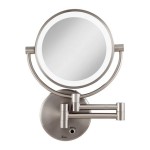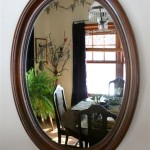Do Convex Mirrors Always Produce Virtual Images?
Convex mirrors, often called diverging mirrors, are curved mirrors where the reflective surface bulges outward. They are commonly used in applications like rearview mirrors in vehicles, security surveillance systems, and store aisles due to their unique ability to widen the field of view. A fundamental question arises when discussing convex mirrors: do they always produce virtual images?
The answer is a resounding yes. Convex mirrors invariably generate virtual images, regardless of the object's position relative to the mirror. This characteristic stems from the nature of light reflection and the inherent properties of convex mirrors. To understand this phenomenon, we need to delve into the concepts of image formation and the unique behavior of light when interacting with convex mirrors.
Image Formation in Mirrors
When light rays from an object strike a mirror, they undergo reflection, changing direction according to the laws of reflection. The reflection process follows the principle that the angle of incidence (the angle between the incoming light ray and the normal to the mirror surface) equals the angle of reflection (the angle between the reflected ray and the normal). The reflected rays, extended backward, intersect at a point, forming an image of the object.
There are two primary types of images formed by mirrors: real and virtual. A real image is formed when the reflected light rays actually converge at a point, and it can be projected onto a screen. In contrast, a virtual image is formed when the reflected rays only appear to converge at a point. The light rays do not actually intersect, and therefore, the image cannot be projected onto a screen.
The Diverging Nature of Convex Mirrors
Convex mirrors have a unique characteristic of diverging light rays. When parallel light rays strike a convex mirror, they are reflected outwards, away from the mirror's principal axis. This divergence results in the reflected rays appearing to originate from a point behind the mirror. This point is called the focal point (F) of the mirror. The distance between the mirror's surface and the focal point is known as the focal length (f).
The divergence of light rays in convex mirrors is crucial in understanding why they always produce virtual images. The reflected rays never actually intersect at a point in front of the mirror, making it impossible to project the image onto a screen.
Virtual Image Characteristics
Virtual images formed by convex mirrors possess several distinct features:
-
Upright:
Virtual images in convex mirrors are always upright, meaning they are oriented in the same direction as the object. -
Smaller than the object:
The image formed by a convex mirror is always smaller than the object. This reduction in size is determined by the magnification factor, which is always less than 1 for convex mirrors. -
Located behind the mirror:
The virtual image appears to be located behind the mirror's surface, where the reflected rays seem to converge. Since the light rays never actually intersect in front of the mirror, the image cannot be projected onto a screen.
These characteristics make convex mirrors ideal for applications where a wider field of view and magnified images are not required. For example, in rearview mirrors, convex mirrors provide a broader view of the surroundings, allowing drivers to see traffic approaching from the sides. In security systems, convex mirrors are used to monitor larger areas, as they can capture a wider range of angles.
In conclusion, convex mirrors consistently produce virtual images due to their diverging nature and the inherent characteristics of virtual images: upright, smaller than the object, and located behind the mirror. These properties make convex mirrors valuable tools in numerous applications where a wide field of view and magnification are not the primary requirements.
Why Do Convex Mirrors Always Form A Virtual Image Quora

A Convex Mirror Always Produces An Erect Real Image Of Diminished Sizean Virtual And Enlarged Sizea Size
Can A Convex Mirror Form Magnified Image Quora
In What Situations Do Convex Lenses Create Virtual Images Quora
Why Do Convex Mirrors Always Form A Virtual Image Quora
Is It Possible For A Convex Mirror To Produce Real Image When The Object Virtual Quora

Which Of The Following Mirror Always Form Virtual And Diminished Image Irrespective Object Location
Under What Condition Do Converging Lines Form A Virtual Image Quora
Is It Right A Convex Mirror Always Forms An Inverted Image Quora

Which Of The Following Mirror Always Form Virtual And Diminished Image Irrespective Object Location








